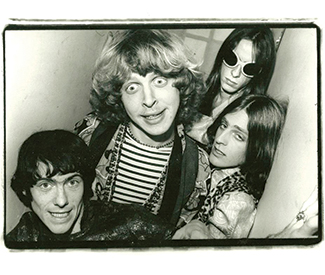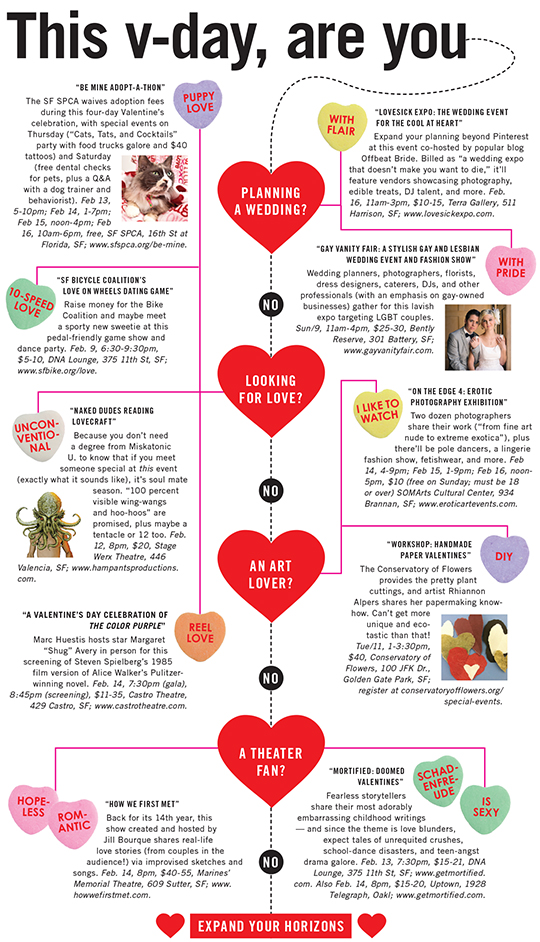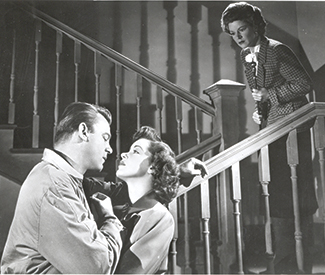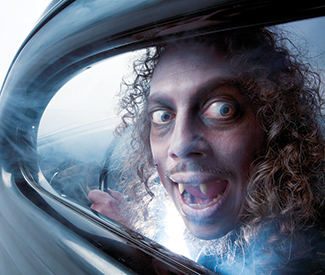steve@sfbg.com
Evictions and displacement have become San Francisco’s top political issues, amplified by protests against tech companies that are helping gentrify the city. Yet Airbnb, which facilitates the conversion of hundreds of San Francisco apartments into de facto hotel rooms, has so far avoided that populist wrath.
Tenants use the online, short-term rentals to help make rent in this increasingly expensive city, a point that the company often emphasizes.
“For thousands of families, Airbnb makes San Francisco more affordable,” Airbnb spokesperson Nick Papas wrote to the Guardian by email, citing a company survey finding that “56 percent of hosts use their Airbnb income to help pay their mortgage or rent.”
But it’s also true that Airbnb allows hundreds of rent-controlled apartments to be removed from the permanent housing market — in violation of local tenant, zoning, tax, and other laws — something that has united tenant, landlord, hotel, and labor groups against it (see “Into thin air,” 8/6/13).
“The problem is Airbnb is so easy and attractive that you can take a unit out from under rent control forever,” San Francisco tenant attorney Joseph Tobener told the Guardian.
“We’re getting 15 calls a week on Airbnb,” he said, describing four categories of complaints: landlords evicting tenants to increase rents through Airbnb, tenants complaining about neighbors using Airbnb, tenants being evicted for getting caught illegally subletting through Airbnb, and Airbnb hosts who can’t get guests to leave (city law gives even short-term residents full tenant rights, except in hotels).
There isn’t good public data on how many units are being taken off the market, but Airbnb generally lists well over 1,000 housing units in San Francisco at any given time, with its smaller competitors (such as Roomorama and VRBO) adding hundreds more.
The San Francisco Rent Board listed 326 no-fault evictions (Ellis Act, owner move-in, capital improvement) in its 2012-13 annual report. That number is almost certain to rise in the 2013-14 report due out in March, and it is compounded by an unknown number of buyouts that pressure tenants to voluntarily leave, all of it creating a displacement crisis that has galvanized the city.
“Isn’t it far more likely that more units are being lost [from the rental market] through Airbnb?” San Francisco Magazine recently quoted a UC Berkeley professor as saying in an article questioning whether Ellis Act evictions are really a “crisis.”
So Airbnb is clearly having a big impact on the city’s affordable housing crisis. Yet Airbnb is largely flying under the political radar in its hometown and ducking questions about its impacts.
“Airbnb has all the statistics we need to assess its impacts on the city’s housing market,” Tobener said. The company refuses to disclose such data. Airbnb’s customers need to consider their impacts to the city’s affordable housing crisis, Tobener added, because “there are social consequences to the decisions we make.”
STALLED IN LIMBO
Last year I discovered Airbnb was flouting a ruling that it should be paying the city’s 15 percent transient occupancy tax (“Airbnb isn’t sharing,” 3/19/13), a nearly $2 million per year tax dodge.
Yet Airbnb, which has quickly grown from a small start-up into a company worth nearly $3 billion, has some powerful friends in Mayor Ed Lee and venture capitalist Ron Conway, who invests in both Airbnb and Mayor Lee’s political campaigns and committees.
So the company has stonewalled Guardian inquiries for the last year as it has worked with Board of Supervisors President David Chiu on legislation that tries to bring the company’s business model into compliance with local laws. That hasn’t been easy, as Chiu told us.
“It has been difficult to corral the different stakeholders to get on the same page,” Chiu said. “Airbnb has been like unraveling an onion. The more progress we make, the more issues come up.”
Janan New, executive director of the San Francisco Apartment Association, says it shouldn’t be so hard. “They need to enforce the law. They need to collect the hotel tax. They don’t need new laws,” she told us.
While the city is unlikely to simply follow New’s advice, the displacement issue adds another layer to Airbnb’s onion, one that sources say has become an issue of growing concern within the company, which has finally begun to respond to Guardian inquiries.
Those concerns have also been compounded as Airbnb is now being sued by one of Tobener’s clients, Chris Butler, who says he was evicted from his rent-controlled Russian Hill apartment so the landlord could make more money through Airbnb (see “Airbnb profits prompted SF eviction, ex-tenant says,” SF Chronicle, 1/22/14).
“We strongly support rules that keep people in their homes, and the vast majority of Airbnb hosts are regular people just trying to make ends meet,” Airbnb told the Guardian. “Whatever happened in this case, we certainly do not support unscrupulous landlords who evict long term tenants solely to turn their apartments into short-term rentals, but it is important to note that experts have found such cases to be extremely rare.”
Airbnb didn’t respond to our follow-up questions, but those “expert” findings appear to be a reference to a study the company commissioned late last year from Berkeley-based Rosen Consulting Group entitled “Short-Term Rentals and Impact on Apartment Market.”
But that study of Airbnb’s impact to rental housing in San Francisco doesn’t really draw the conclusions that company seems to think and hope it does.
MISLEADING NUMBERS
One number that the study and Airbnb have repeatedly sought to highlight is the claim that “90 percent of Airbnb hosts in San Francisco use Airbnb to occasionally rent out only the home in which they live,” as the company put it to us.
“Airbnb users generally do not identify themselves as utilizing short-term rentals as a business. In fact, 90 percent of Airbnb hosts [in San Francisco] indicated that they live in the home listed on Airbnb,” was how the study put it.
“It’s trash. They pick and choose the data they want to share,” Tobener said of the study and the 90 percent figure, which he says was derived from a 2011 user survey before the local housing market exploded. Rosner Consulting told us it stands by the study but won’t discuss it.
The figure also lumped in those with multiple rooms in their homes that have traditionally been rented by local residents and covered by rent-control laws. It also discloses that 10 percent of Airbnb hosts are renting out outside units simply as a business, a figure that has likely risen over the last three years.
The study does disclose that there were 1,576 properties booked through the company in August 2012, which the study notes was just 0.4 percent of the 378,000 homes in San Francisco, which Airbnb uses to dismiss its impacts on the market.
But the study includes only macroeconomic data, rather than looking at the company’s impact on certain socioeconomic groups — such as those making 120 percent or less of median area income, the people being evicted from and priced out of the city — or the supply of rent-controlled housing.
“The average gross income per Airbnb property in the previous 12 months was $6,722, or an average of $564 per month,” the study discloses, choosing to use average rather than median figures even though they’re considered less accurate gauges of income and housing data.
Customers who only use Airbnb once or twice will skew those averages way down. Yet the study then compares that number to the “average market-rate apartment rent in San Francisco, which was $2,498 per month in mid-2013. The average income generated is insufficient to cover monthly rental expenses in full.”
Which tells us nothing about how Airbnb is impacting either rent-controlled housing or the median income San Franciscans who rely on it. According to the US Census Bureau, the median rent in San Francisco was $1,463 in 2012 and 64 percent of San Franciscans rent their homes.
“The study is bullshit,” Tobener said. “They could pull data and tell us how many people are renting full units on Airbnb, but they don’t.”
Yet the company claims that it is concerned about these issues and working with the city.
“We believe our community of hosts should pay applicable taxes and we are eager to discuss how this might be made possible. We’ve reached out to officials in San Francisco and we continue to have productive discussions with city leaders,” Airbnb told the Guardian. “These issues aren’t always easy, but if we work together, we can craft fair, responsible, clear rules that ensure San Francisco continues to benefit from home-sharing.”
Yet neither Airbnb nor its political supporters seem to want to have this public discussion. The company has stopped responding to our inquiries, again, and when we asked the Mayor’s Office about Airbnb’s impacts to the affordable housing market, we got this response and a refusal to directly answer either the original or follow-up questions: “The Mayor has prioritized preserving, stabilizing and growing the City’s housing stock. His policy priorities include protecting residents from eviction and displacement, including Ellis Act reform and stabilizing and protecting at-risk rent-controlled units, through rehabilitation loans and a new program to permanently stabilize rent conditions in at-risk units.”
Yet Airbnb continues to have an impact on those “at-risk rent-controlled units” that few people seem to want to discuss.












